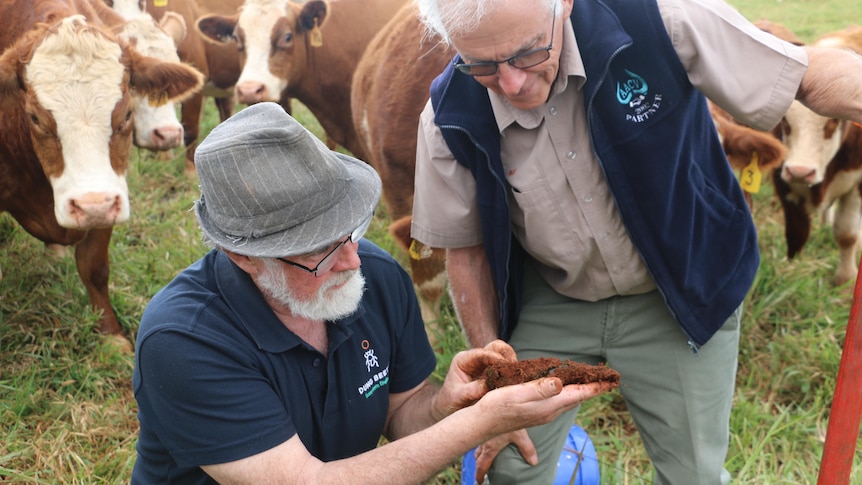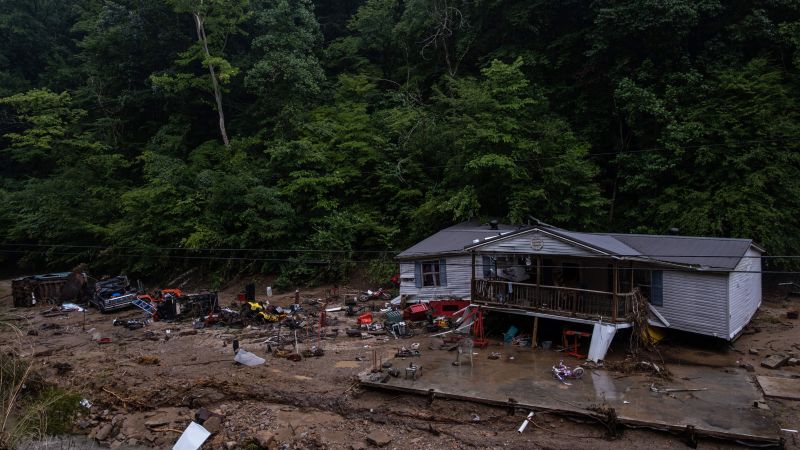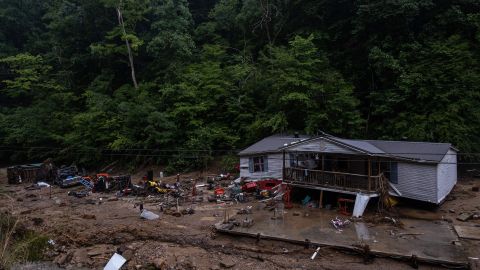CNN
—
As the death toll in flood-stricken areas of Kentucky continues to rise, rescue workers and officials are focused on recovering missing people in several counties and coordinating vital aid for thousands of displaced residents.
At least 28 people, including four children, have died due to severe flooding that struck parts of Kentucky last week, Gov. Andy Beshear announced Sunday. The governor told NBC’s “Meet the Press” that he believes recovery crews are “going to be finding bodies for weeks, many of them swept hundreds of yards, maybe a quarter-mile plus from where they were last.”
While reading a breakdown of those killed in each county during a news conference Sunday, Beshear became visibly emotional when he reached the four children dead in Knott County, where 15 people have been found dead.
“It says ‘minor,’” the governor said looking at the list. “They are children. The oldest one is in second grade,” Beshear said.
The flooding – which swelled onto roads, destroyed bridges and swept away entire homes – displaced thousands of Kentuckians, according to the governor. It also knocked out vital power, water and roadway infrastructure, some of which has yet to be restored.
There was risk of flash flooding Sunday night into Monday morning, according to the National Weather Service. A slight chance of excessive rainfall is possible throughout the affected region on Monday and Tuesday. Conditions are expected to begin improving Monday, but the region could receive two-day totals of up to two inches of rain. Some areas could see more.
In Perry County, as many as 50 bridges are damaged and inaccessible, according to county Judge Executive Scott Alexander.
“What that means is there’s somebody living on the other side or multiple families living up our holler on the other side that we’re still not able to have road access to,” Alexander said.
Kentucky State Police are still actively searching for missing residents in several counties and ask that families inform law enforcement if their loved one is missing.
Search and recovery efforts could face yet another obstacle as temperatures are expected to soar Tuesday and through the rest of the week, placing crews, volunteers, displaced people and the area’s homeless population under pressing heat.
As the climate crisis fuels more extreme and frequent weather events, several areas of the US are currently experiencing flash flood risk, including swathes of the desert Southwest, Knoxville, Tennessee, and Tucson, Arizona.
State officials are immediately focused on getting food, water and shelter to the people who were forced to flee their homes.
Power outages and storm damage left 22 water systems operating in a limited capacity, a Sunday news release from the governor’s office said. More than 60,000 water service connections are either without water or under a boil advisory, it said.
Nearly 10,000 customers in the eastern region of the state were still without power as of early Monday, according to PowerOutage.us.
Officials overseeing the recovery efforts say bottled water, cleaning supplies and relief fund donations are among the most needed resources as the region works toward short and long term recovery. FEMA is providing tractor trailers full of water to several counties.
“A lot of these places have never flooded. So if they’ve never flooded, these people will not have flood insurance,” the mayor of Hazard, Kentucky, Donald Mobelini told CNN Saturday. “If they lose their home, it’s a total loss. There’s not going to be an insurance check coming to help that. We need cash donations,” he said, referring to a relief fund set up by the state.
Beshear established a Team Eastern Kentucky Flood Relief Fund to pay the funeral expenses of flood victims and raise money for those impacted by the damage. As of Sunday morning, the fund had received more than $1 million in donations, according to the governor.
The federal government has approved relief funding for several counties. FEMA is also accepting individual disaster assistance applications from impacted renters and homeowners in Breathitt, Clay, Knott, Letcher and Perry counties, the governor said, noting he thinks more counties will be added to the list as damage assessments continue.
Though the recovery effort was still in the search-and-rescue phase over the weekend, Beshear said in a news conference Saturday that he believes the losses will be “in the tens if not the hundreds of millions of dollars.”
“This is one of the most devastating, deadly floods that we have seen in our history,” Beshear told NBC Sunday. “It wiped out areas where people didn’t have that much to begin with.”
And it wasn’t just personal possessions washed away by the floodwaters. A building housing archival film and other materials in Whitesburg, was impacted, with water submerging an irreplaceable collection of historic film, videotape and audio records that documented Appalachia.
Appalachian filmmaker Mimi Pickering told CNN that the beloved media, arts and education center, Appalshop, held archival footage and film strips dating as far back as the 1940s, holding the stories and voices of the region’s people. Employees and volunteers were racing to preserve as much material as they could.
“We’re working as hard and fast as we can to try to save all that material… The full impact, I don’t think you have totally hit me yet. I think I don’t really want to think about it,” Pickering said. She noted the Smithsonian and other institutions have reached out offering assistance.
The extensive loss Kentuckians are suffering will likely also take a mental toll, Frances Everage, a therapist and 44-year resident of the city of Hazard told CNN. While her home de ella was spared, she said some of her friends de ella have damaged homes or lost their entire farms.
“When you put your blood, sweat and tears into something and then see it ripped away in front of your eyes, there’s going to be a grieving process,” Everage said. “This community will rebuild and we will be okay, but the impact on mental health is going to be significant.”
.




